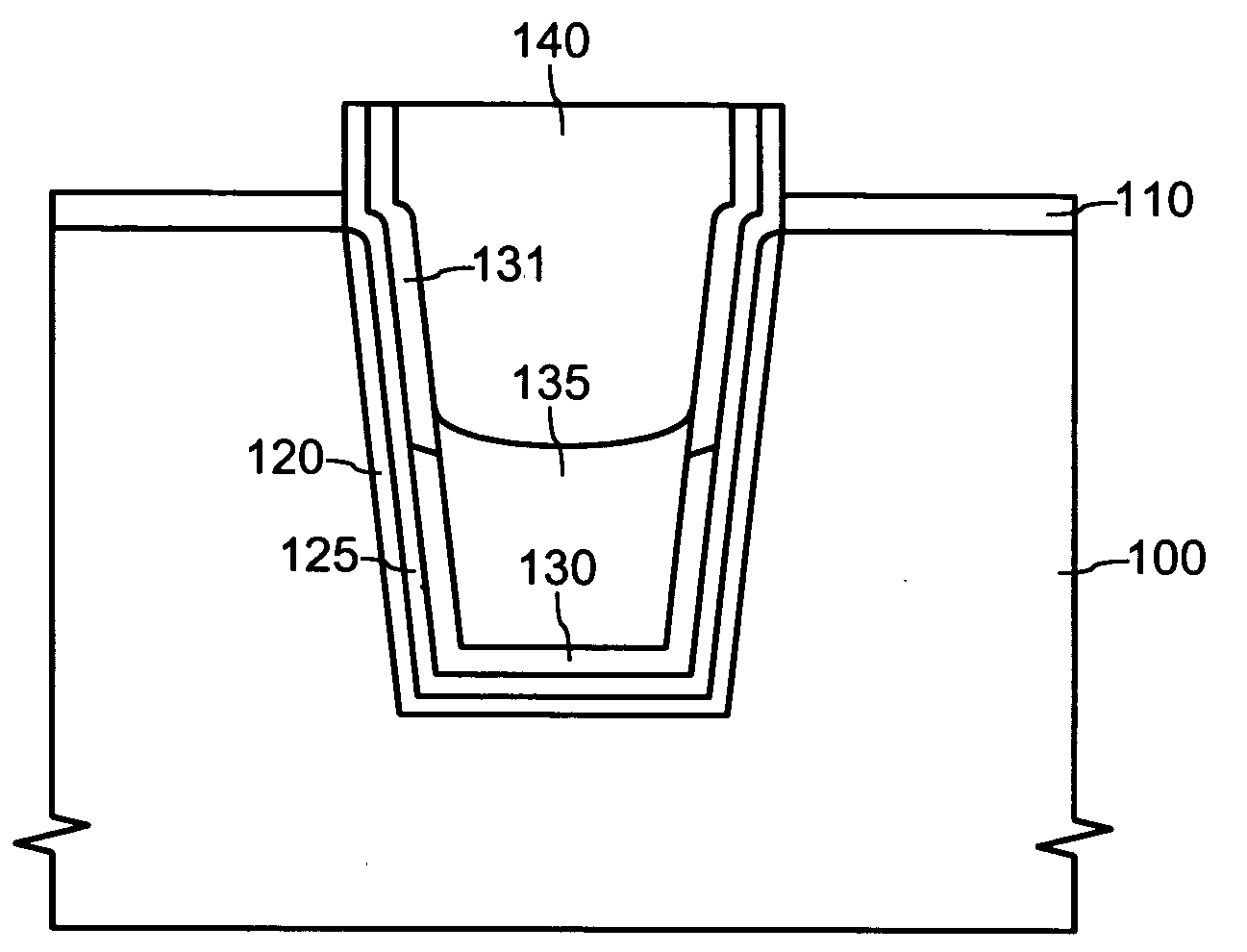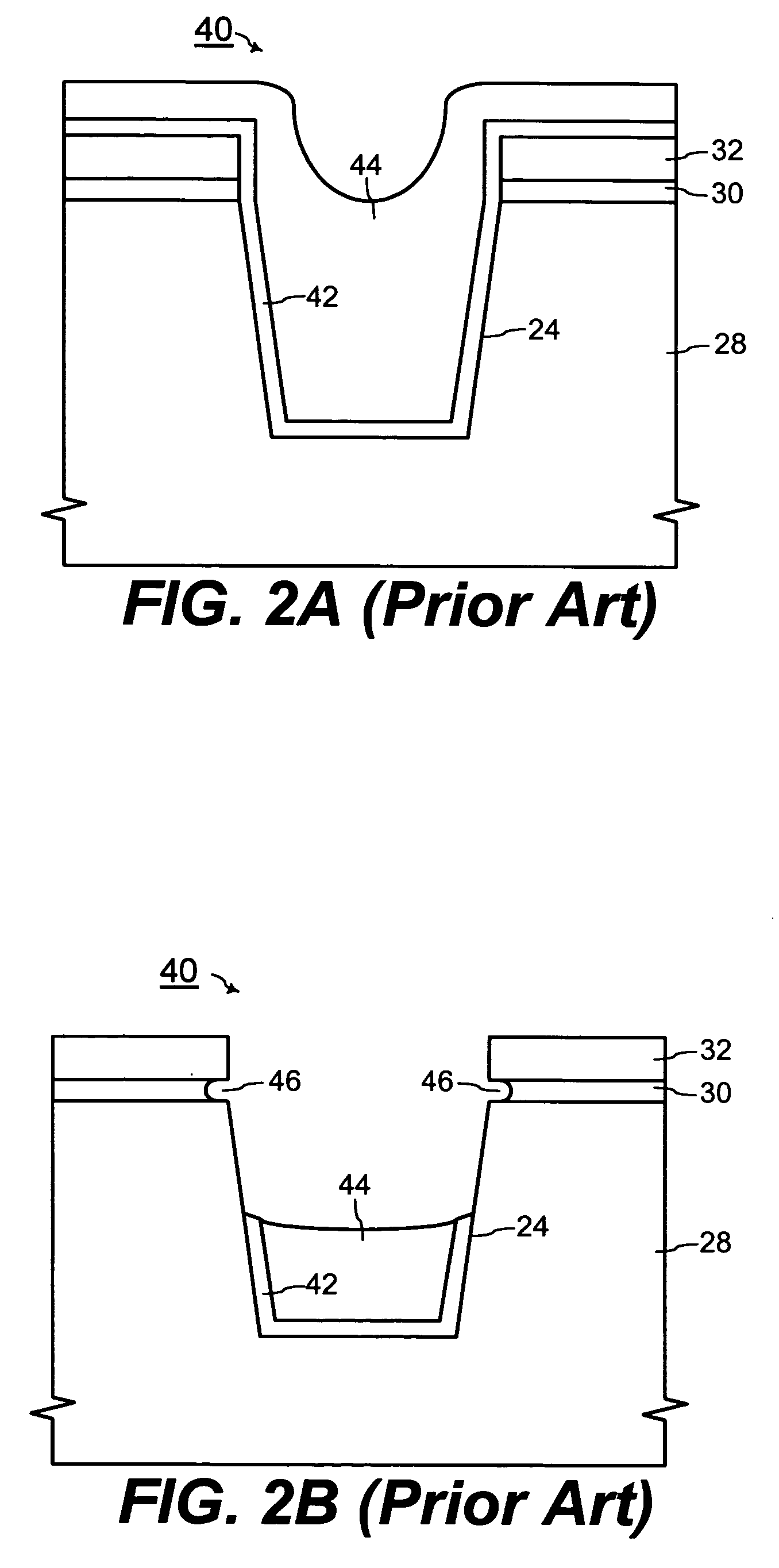Shallow trench isolation structure with converted liner layer
a technology of liner layer and trench isolation, which is applied in the direction of basic electric elements, electrical equipment, semiconductor devices, etc., can solve the problems of hv oxide layer damage, flash memory device especially vulnerable to degradation of production yield, and even failure of adjacent transistors, so as to prevent the formation of dents in the sti structure
- Summary
- Abstract
- Description
- Claims
- Application Information
AI Technical Summary
Benefits of technology
Problems solved by technology
Method used
Image
Examples
Embodiment Construction
[0039] Referring to FIG. 3, an oxide (SiO2 for example) layer 105 and a nitride (SiN for example) layer 110 form masking layers sequentially formed on a semiconductor substrate 100. The oxide layer 105 and the nitride layer 110 are patterned by a photo etch process to form an opening 102 through such layers 110 and 105. The layers 110 and 105 with the opening 102 form a mask layer pattern 112 for defining an active region on the semiconductor substrate 100.
[0040]FIG. 3 illustrates for example a cell region of a flash memory device or a peripheral circuit region of the flash memory device having the oxide layer 105 as a HV gate oxide layer on the semiconductor substrate 100. Using the mask layer pattern 112 as an etch mask, the semiconductor substrate 100 is anisotropically dry-etched to form a STI opening 102 through the semiconductor substrate 100. The STI opening 102 is formed as a STI trench in one embodiment of the present invention. However, the present invention may be practi...
PUM
 Login to View More
Login to View More Abstract
Description
Claims
Application Information
 Login to View More
Login to View More - R&D
- Intellectual Property
- Life Sciences
- Materials
- Tech Scout
- Unparalleled Data Quality
- Higher Quality Content
- 60% Fewer Hallucinations
Browse by: Latest US Patents, China's latest patents, Technical Efficacy Thesaurus, Application Domain, Technology Topic, Popular Technical Reports.
© 2025 PatSnap. All rights reserved.Legal|Privacy policy|Modern Slavery Act Transparency Statement|Sitemap|About US| Contact US: help@patsnap.com



